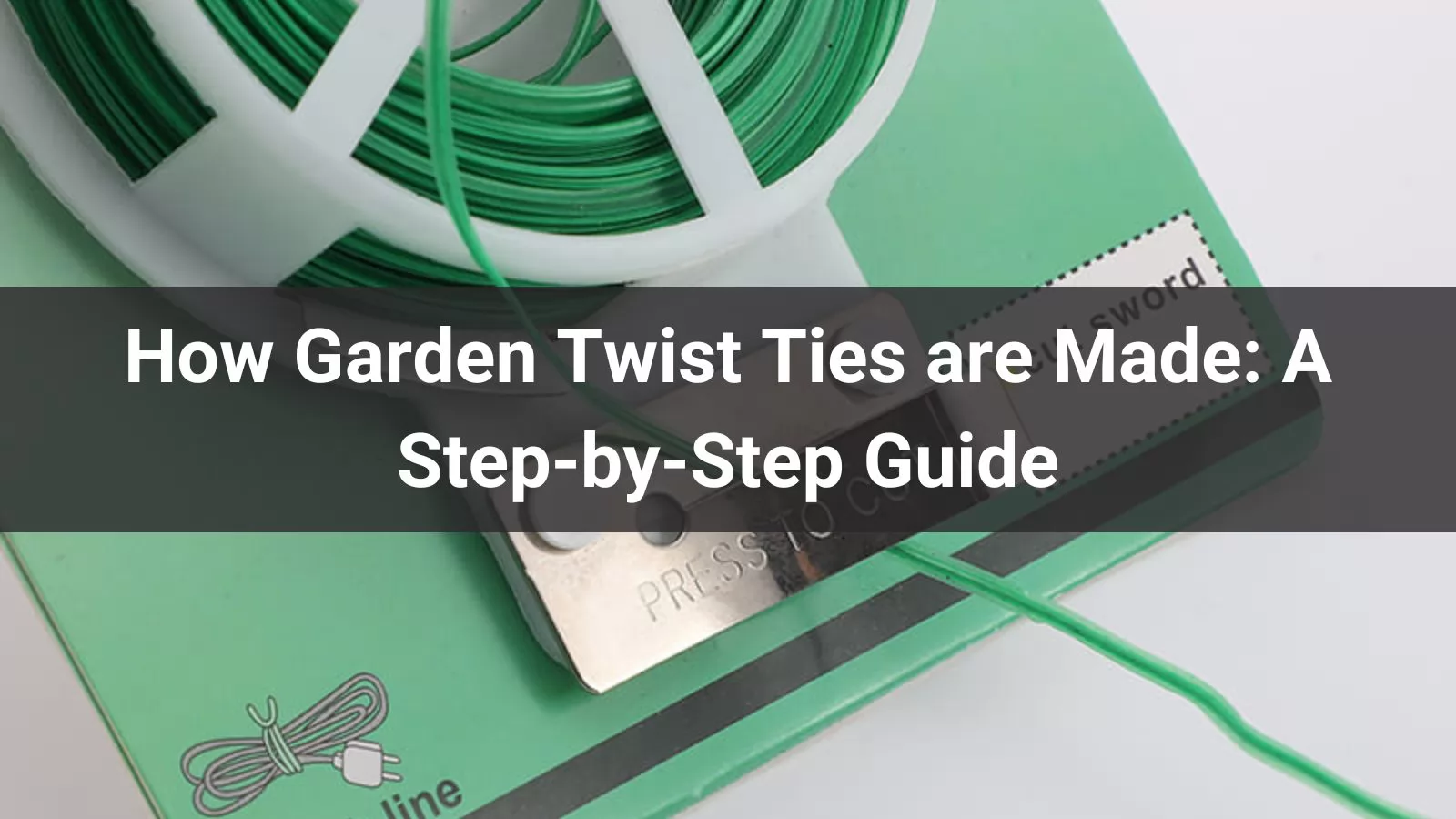
Garden twist ties are versatile tools used by gardeners and hobbyists to secure plants, organize cables, and tackle various tasks. These simple yet effective ties consist of a flexible metal wire encased in a protective coating, typically plastic or rubber. Ever wondered how these handy tools are made? This article provides a step-by-step guide to the manufacturing process of garden twist ties.
The process begins with selecting high-quality raw materials. The core of a twist tie is a thin, flexible metal wire, usually made of galvanized steel or aluminum, chosen for its durability and malleability. The outer coating is typically made from polyethylene (PE) or polyvinyl chloride (PVC) plastic, which provides weather resistance and flexibility. Some manufacturers may also use paper or biodegradable materials for eco-friendly options.
The metal wire is sourced in large spools and undergoes a straightening process to remove any kinks or bends. The wire is then cut to the desired length, depending on the intended size of the twist ties. For standard garden twist ties, the wire is typically between 0.5 mm and 1 mm in diameter, ensuring it is strong enough to hold plants but flexible enough to bend easily.
The straightened wire is fed into an extrusion machine, where it is coated with plastic or rubber. In this process:
The wire passes through a die, and molten plastic (PE or PVC) is extruded around it, forming a uniform coating.
The coated wire is then cooled in a water bath to solidify the plastic layer.
The thickness of the coating is carefully controlled to ensure the twist tie remains flexible yet durable. The coating also adds color, with green being a popular choice for garden applications to blend with plants.
Once the wire is coated, it is cut into precise lengths to create individual twist ties. This can be done in two ways:
Pre-cut Twist Ties: The coated wire is cut into short lengths (e.g., 4–12 inches) for individual use.
Continuous Rolls: The coated wire is wound into large spools, allowing users to cut custom lengths as needed. Automated cutting machines ensure consistency in length, and the ends of the ties are smoothed to prevent sharp edges.
Before packaging, the twist ties undergo rigorous quality checks. Manufacturers test:
Flexibility: Ensuring the ties can be bent and twisted without breaking.
Coating Integrity: Checking for cracks or peeling in the plastic coating.
Durability: Verifying that the ties can withstand outdoor conditions like UV exposure, moisture, and temperature changes. Any defective ties are removed from the production line.
The final step is packaging the twist ties for distribution. Pre-cut ties are bundled into packs, often secured with a label or placed in plastic bags. Continuous rolls are wound onto spools or packaged in dispensers for easy use. Eco-friendly options may be packaged in recyclable materials to appeal to environmentally conscious consumers.
The packaged twist ties are shipped to retailers, garden centers, or directly to consumers through online platforms. Manufacturers may also supply bulk orders to agricultural businesses or nurseries.
The production of garden twist ties is a streamlined process that combines precision engineering with practical design. From selecting durable materials to applying weather-resistant coatings, each step ensures that the final product is reliable and versatile for gardeners. Next time you use a twist tie to support a tomato plant or organize a trellis, you’ll have a deeper appreciation for the craftsmanship behind this everyday tool. If you are looking for a reliable Chinese supplier, Contact us at Linkwin now!











We use cookies to make the website work, to provide advanced features, social media and traffic analysis, and we use analytics and third-party advertising cookies. If you choose to click "Deny All", you will retain the default setting of not allowing the use of cookies or other tracking tools other than technical tools.



